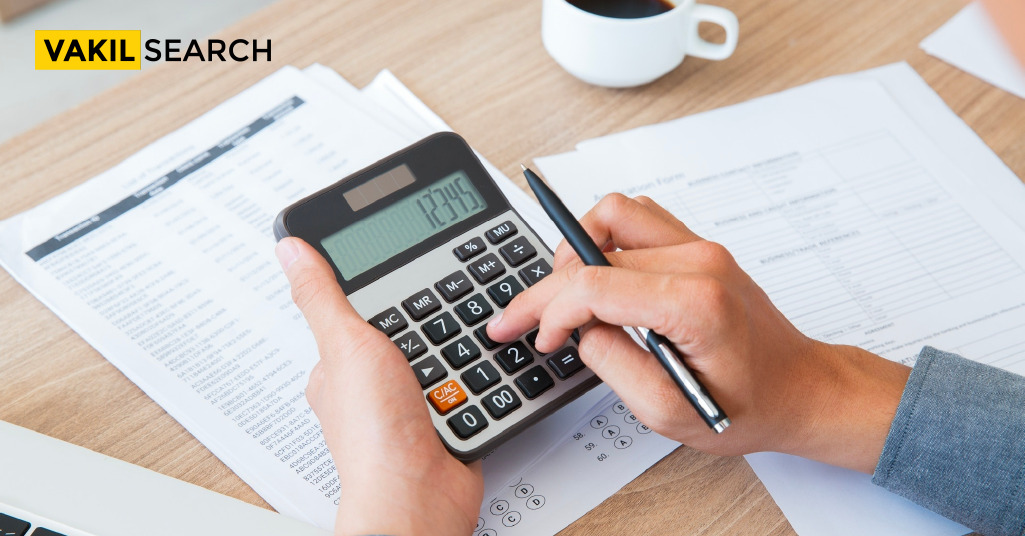Learn how to accurately calculate your HRA exemption for filing your ITR. Follow our step-by-step guide and avoid common mistakes.
Introduction
HRA or House Rent Allowance is an allowance given by an employer to an employee to cover their rental expenses. It is a part of the employee’s salary package and is usually provided as a tax-free benefit. However, not all of the HRA received by the employee is tax-free, and the tax exemption on HRA is subject to certain conditions.
It is important to calculate HRA exemption correctly for filing income tax returns (ITR) because the tax liability of the employee depends on the taxable portion of HRA. If the HRA exemption is not calculated correctly, the employee may end up paying more tax than required, leading to a financial burden.
Calculating HRA exemption for ITR involves a few steps, including determining the HRA received from the employer, calculating the actual rent paid, calculating the rent paid more than 10% of salary, calculating the HRA exemption, and calculating the taxable HRA. In this article, we will discuss these steps in detail to help you calculate your HRA exemption accurately and file your ITR without any errors.
Understanding HRA Exemption
HRA exemption is the amount of HRA received by an employee that is exempt from income tax. The exempt portion of HRA is calculated by taking into account the actual HRA received, the actual rent paid, and the employee’s salary. The calculation of HRA tax exemption is subject to certain conditions as specified under the Income Tax Act, 1961.
The HRA exemption is calculated as the minimum of the following three amounts:
- The actual HRA received from the employer
- The actual rent paid minus 10% of the basic salary
- 50% of the basic salary for employees residing in metro cities and 40% for employees residing in non-metro cities
Several factors affect the HRA exemption, including the employee’s salary, the rent paid, and the location of the rental property. For instance, if an employee’s salary is higher, the HRA exemption will be lower. Similarly, if the rent paid is lower, the HRA exemption will be lower.
Steps to Calculate HRA Exemption for ITR
In this section, we will discuss the step-by-step process involved in calculating HRA exemption for ITR.
-
Step 1: Determine HRA Received From Employer
The first step in calculating HRA exemption is to determine the actual HRA received from the employer. This information can be found in the employee’s salary slip or Form 16 provided by the employer.
-
Step 2: Calculate Actual Rent Paid
The next step is to calculate the actual rent paid by the employee. This includes the rent paid for the house/apartment, and any other charges such as maintenance fees, etc. It is important to note that only rent paid for the period during which the employee occupied the rented property can be considered.
-
Step 3: Calculate Rent Paid more than 10% of Salary
Once the actual rent paid is determined, the next step is to calculate the rent paid more than 10% of the basic salary. This is the amount that can be claimed as an HRA exemption. For example, if the basic salary is ₹ 50,000 per month, 10% of the basic salary would be ₹ 5,000. If the actual rent paid is ₹ 15,000 per month, the rent paid more than 10% of the basic salary would be ₹ 10,000 (i.e., ₹ 15,000 – ₹ 5,000).
-
Step 4: Calculate HRA Exemption
The HRA exemption can be calculated as the minimum of the following three amounts:
Actual HRA received from the employer
Rent paid more than 10% of the salary
50% of basic salary for employees residing in metro cities and 40% for employees residing in non-metro cities
Using the above example, if the employee received an HRA of ₹ 20,000 per month, the HRA exemption would be ₹ 10,000 (i.e., the rent paid more than 10% of the salary).
-
Step 5: Calculate Taxable HRA
Once the HRA exemption is determined, the taxable HRA can be calculated as the difference between the actual HRA received and the HRA exemption. This amount needs to be added to the employee’s taxable income for the financial year while filing ITR.
In conclusion, calculating HRA exemption for ITR involves determining the actual HRA received, actual rent paid, rent paid more than 10% of salary, HRA exemption, and taxable HRA. By following the above steps, employees can accurately calculate their HRA exemption and avoid any discrepancies while filing their ITR.
How to Claim HRA Exemption in ITR?
In this section, we will discuss how to claim HRA exemption while filing income tax returns (ITR).
-
Step 1: Download the Appropriate ITR Form
The first step in claiming HRA exemption in ITR is to download the appropriate ITR form. The ITR form may vary depending on the type of taxpayer, such as individual, HUF, or company.
-
Step 2: Fill in Personal and Income Details
The next step is to fill in personal and income details in the ITR form. This includes details such as name, PAN, address, salary income, etc.
-
Step 3: Fill in Details Related to HRA Exemption
Under the ‘Salary’ section of the ITR form, there will be a column for ‘Allowances to the extent exempt under Section 10’. In this section, you need to enter the amount of HRA exemption calculated in Section 2.
-
Step 4: Provide Details of the Employer
You will also need to provide details of your employer, such as name, address, TAN number, etc., in the ITR form.
-
Step 5: Verify and Submit the ITR Form
After filling in all the relevant details, you need to verify and submit the ITR form. You can verify the ITR form electronically using Aadhaar OTP, net banking, or a digital signature.
Common Mistakes to Avoid While Claiming HRA Exemption in ITR:
- Not providing accurate details: Ensure that you provide accurate details related to HRA exemption in the ITR form. Any discrepancies can lead to complications during the tax assessment process.
- Not calculating HRA exemption correctly: Make sure to follow the steps outlined in Section 2 to calculate HRA exemption accurately. Incorrect calculations can result in over or underpayment of taxes.
- Not submitting the ITR form on time: It is important to file your ITR form within the due date to avoid penalties and interest charges.
Benefits of Using an HRA Exemption Calculator
Using an HRA (House Rent Allowance) exemption calculator offers several advantages that make it a valuable tool for individuals navigating the complexities of tax and finance. Here are the key benefits of using an HRA exemption calculator:
- Swift and Accurate Calculations: HRA exemption calculators provide quick and precise calculations, eliminating the need for time-consuming manual computations. With just a few inputs, you can obtain accurate results within seconds.
- Error-Free Results: These calculators are designed to minimise the risk of errors in HRA exemption calculations. Human errors, which are common in manual calculations, can lead to discrepancies in your tax returns. Using a calculator ensures that you receive the correct exemption amount.
- Comprehensive Consideration of Variables: HRA exemption depends on various factors, including your basic salary, HRA received, and the city of your residence. An HRA calculator takes all these variables into account, guaranteeing that your exemptions are accurately calculated.
- Simplified Tax Filing: By using an HRA exemption calculator, you can simplify the process of determining your HRA exemptions for a specific financial year. This can be particularly beneficial when filing your year-end taxes, ensuring that you claim the appropriate exemptions and reduce your taxable income.
Eligibility Factors to Avail HRA Exemptions
Availing House Rent Allowance (HRA) exemptions are subject to specific eligibility criteria that must be met by salaried employees looking to reduce their taxable income. Here are the key eligibility factors that determine whether you can claim HRA exemptions:
- Salaried Employee Status: To be eligible for HRA exemptions, you must be a salaried employee. Self-employed individuals do not qualify for this tax benefit.
- Inclusion of HRA Component: Your employer must include an HRA component as part of your monthly salary payments. This component is crucial for claiming HRA exemptions.
- Rent Payment: You should be paying rent for your accommodation to qualify for House Rent Allowance tax benefits. Rent payments must be made during the financial year for which you are seeking exemptions.
- Non-Ownership of Residential Property: You should not own any residential property in the city where you reside and for which you are seeking HRA exemptions. Ownership of a house or apartment disqualifies you from claiming HRA benefits.
- Non-Rental Income: It is essential that you do not receive rental income from any property you may own. If you do, you may not be eligible for HRA exemptions.
Documents Required to Claim Tax Exemption on HRA
Claiming tax exemption on House Rent Allowance (HRA) is a common practice among salaried individuals, but it requires proper documentation to support the claim. To ensure a smooth and legitimate HRA tax exemption, you need to provide certain essential documents. Here’s a breakdown of the documents typically required:
- Rent Receipts: Rent receipts are the cornerstone of your HRA tax exemption claim. These receipts should contain vital details such as the landlord’s name, address, the rental period, the amount paid, and the tenant’s name. Each rent receipt should be duly signed or stamped by the landlord, and you should have a receipt for every rental payment made throughout the financial year.
- Rent Agreement or Lease Deed: A copy of your rent agreement or lease deed can serve as strong legal evidence of your tenancy. This document outlines all the terms and conditions of your rental agreement, including the rent amount, the duration of the agreement, and any other pertinent details.
- PAN (Permanent Account Number) of Landlord: In certain countries, like India, furnishing your landlord’s PAN is mandatory when claiming HRA tax exemption. Make sure to request this information from your landlord and include it in your documentation.
- Declaration of HRA: Employers may require employees to submit a declaration form that specifies the amount of HRA received and provides details of their rental expenses. This declaration assists employers in accurately calculating the eligible HRA exemption when deducting taxes from your salary.
- Utility Bills: While not universally mandatory, utility bills such as electricity, water, or gas bills can be supplementary documents to substantiate your HRA claim. They serve to establish your residence at the rented accommodation and further validate your rental expenses.
Conclusion
Vakilsearch’s HRA calculator is an online tool that helps taxpayers calculate their HRA exemption accurately. The calculator takes into account various factors such as salary, rent paid, and location, and provides a detailed breakdown of the HRA exemption amount.
Using the HRA calculator is simple. Users can enter their basic salary, HRA received from their employer, and the rent paid for the year. The calculator then generates a report that shows the actual rent paid, rent paid in excess of 10% of salary, and the HRA exemption amount.
The HRA calculator offered by Vakilsearch can be a useful resource for taxpayers who want to ensure that they are claiming their HRA exemption accurately while filing their income tax returns. By using the HRA calculator, taxpayers can avoid the risk of under or overestimating their HRA exemption amount and minimise the potential for tax penalties and interest charges.
FAQ
What is HRA (House Rent Allowance) and its significance in income tax returns (ITR)?
House Rent Allowance (HRA) serves as a tax exemption under the Income Tax Act, reducing taxes either partially or entirely. It is specifically designed to cover expenses associated with rented accommodation. However, if an individual does not reside in a rented space, the entire allowance becomes subject to taxation.
How can I determine my eligibility for claiming HRA exemption in my ITR?
The calculation of HRA amounts depends on the employee's salary structure. To be eligible for HRA exemption, the employee must consider the smallest value among the following options: actual HRA received, 50% of the basic salary in metro areas, 40% of the basic salary in non-metro areas, or the rent paid minus 10% of the basic salary.
What documents do I need to provide as proof for claiming HRA exemption?
To avail the deduction for House Rent Allowance (HRA), individuals need to furnish certain documents, such as rent receipts and rental agreements, to their employers. Additionally, if the annual rent payment exceeds ₹ 1 lakh, the landlord's PAN details must be submitted. Employers will then process the HRA exemption in Form 16 based on these provided proofs.
What are the factors considered when calculating HRA exemption for ITR?
For HRA claims, the following regulations apply: HRA cannot exceed 50% of your basic salary. The exemption is limited to the minimum of the following: Actual rent paid minus 10% of the basic salary. Actual HRA received from the employer.
How is the HRA exemption calculated if I live in a rented house?
The term ‘10% of the salary’ pertains to 10% of the basic salary. However, if the rented accommodation is in a metro city, the exemption increases to 50% of the salary, while in non-metro cities, the exemption is set at 40% of the salary.
What if I receive partial HRA or pay rent for only a few months in a financial year? How does it affect the exemption calculation?
If you receive partial HRA or pay rent for only a few months in a financial year, the exemption calculation will be prorated based on the actual HRA received or the rent paid during those specific months.
Are there any specific rules or limits for calculating HRA exemption in ITR?
Yes, specific rules and limits apply for calculating HRA exemption in ITR, such as considering the least of actual HRA received, 50% of basic salary (in metros) or 40% (in non-metros), and actual rent paid minus 10% of basic salary.
How does the HRA exemption calculation differ for individuals living in metro cities and non-metro cities?
For rented accommodation in metro cities, the exemption increases to 50% of the salary, whereas in non-metro cities, it stands at 40% of the salary.
Can I claim HRA exemption if I live with my parents or in a self-owned house?
To claim HRA deduction properly while staying with your parents, you can pay them rent through a bank transfer or a cheque. However, for this to be valid, the property must be owned by your parents since the rent should be paid to the property owners.
What are the steps involved in calculating HRA exemption for ITR?
The calculation for HRA exemption is determined as follows: Actual HRA received from the employer. For residents in metro cities: 50% of (Basic salary + Dearness allowance). For residents in non-metro cities: 40% of (Basic salary + Dearness allowance). Actual rent paid minus 10% of (Basic salary + Dearness allowance).
How is HRA exemption calculated for income tax?
HRA exemption for income tax is calculated based on the least of three factors: actual HRA received, 50% of the employee's basic salary, and the excess rent paid over 10% of basic salary.
What is the HRA deduction limit for ITR?
The HRA deduction limit for ITR varies depending on your actual HRA received, rent paid, and your basic salary.
How to calculate house rent allowance under Section 10 13A?
House rent allowance under Section 10(13A) is calculated by considering the least of three elements: actual HRA received, 50% of basic salary (if in a metro city, else 40%), and rent paid exceeding 10% of basic salary.
Can we claim HRA exemption while filing ITR?
Yes, you can claim HRA exemption while filing your income tax return (ITR) if you are eligible based on your rental and salary details.
How much HRA can be claimed without proof?
You can claim HRA without proof for lower amounts, but it's advisable to maintain rent receipts, rent agreement, and other supporting documents in case of scrutiny.
How do I claim HRA in return filing?
To claim HRA in your return filing, enter the HRA amount, calculate the exempt portion based on the prescribed formula, and declare it under the 'Income from Salary' section of your ITR.
Can I claim HRA tax exemption without rent receipt?
While rent receipts are essential for a valid claim, the Income Tax Act allows exemption without rent receipts for smaller HRA amounts.
What are the 3 conditions for HRA exemption?
Three conditions for HRA exemption are: you should be a salaried employee, receive HRA from your employer, and pay rent for a residential accommodation.
How do I maximise my HRA exemption?
To maximise your HRA exemption, ensure you pay higher rent, live in a metro city, and negotiate with your employer to structure your salary optimally.
Is landlord PAN mandatory for HRA exemption above 15000?
Landlord PAN is mandatory for HRA exemption above ₹ 15,000 as per income tax rules.











